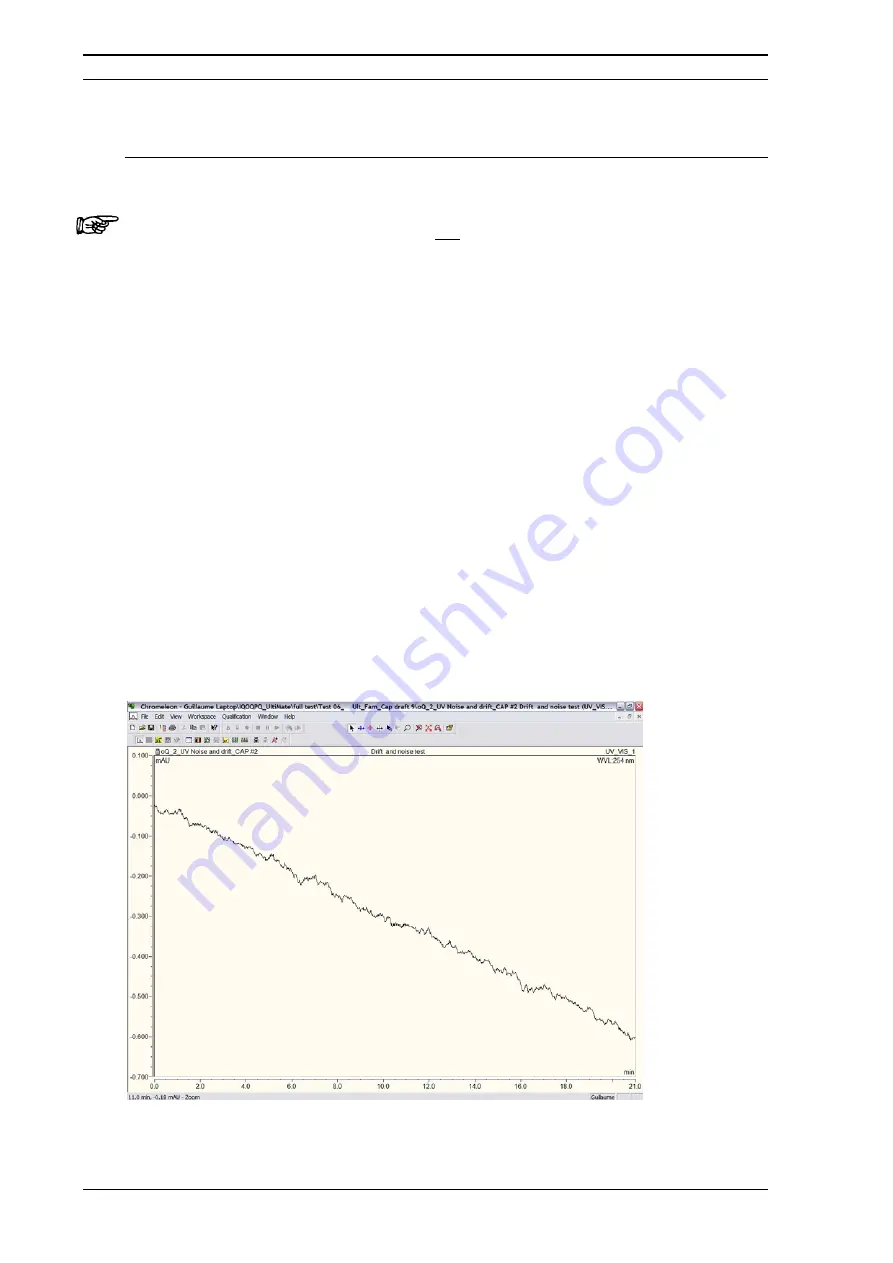
Test Procedures
Page 28 of 60
M1393R0
OQ/PQ Operating Instructions
4.6
Baseline Noise and Drift Test of the UV Detector and Oven Test
4.6.1
Drift and Noise
Note: This test must also be performed for any UV Detector that used for the OQ/PQ,
even if it’s not part of the UltiMate system.
Drift and baseline noise are important parameter for the UltiMate UV Detector. Increased
baseline noise reduces the sensitivity considerably, as it is not possible to distinguish
between low-level signals and noise. The baseline noise of the detector mainly depends on
the lamp. There is a considerable increase in noise if an old lamp with poor light intensity is
used or if the flow cell is dirty.
To minimize any effect from the flow cell, make sure that the measuring and ambient
conditions are constant and that are no gas bubbles in the flow cell. In addition, it is very
important that a new lamp has been burning for several hours. In the detector environment,
avoid drafts and direct sunlight.
The detector baseline noise and drift test is performed at the following conditions:
•
Flow cell installed (and filled with mobile phase A).
•
λ
1 = 254 nm,
λ
2 =
λ
3 =
λ
4 = 0 nm.
•
Time Constant = 2 sec.
•
Data Acquisition Rate = 1 Hz.
•
Data Acquisition Length = 20 min.
FIGURE 4-5 shows a typical result from the noise and drift test.
FIGURE 4-5
Typical UV Detector Noise and Drift Result (254 nm)
















































